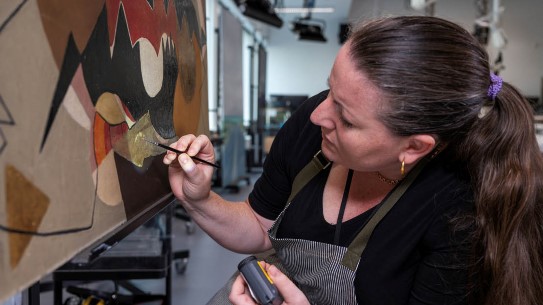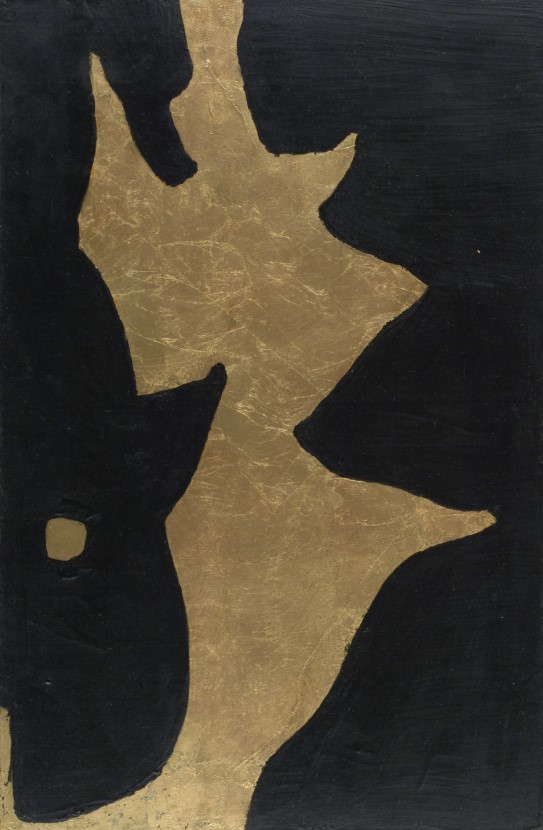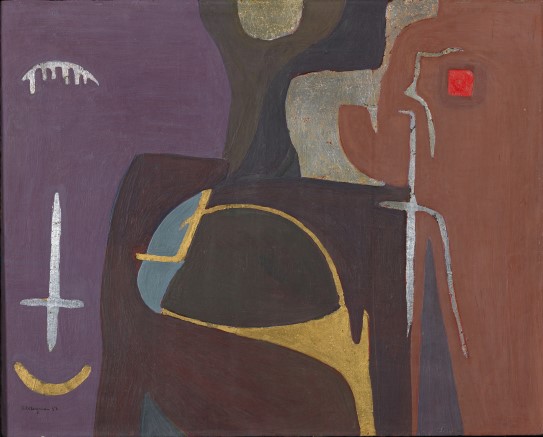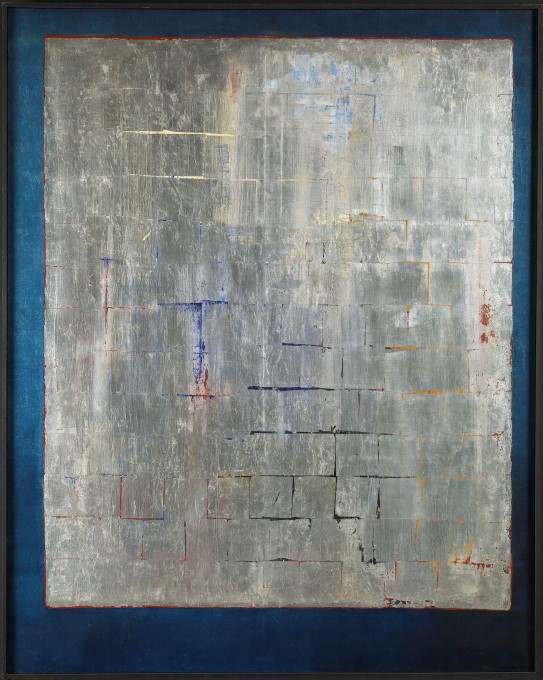
Because Bergman is so closely identified with the metal leaf technique, the National Museum considered it important to take a closer look at whether it really was gold and silver that Bergman used ahead of its exhibition “Becoming Anna-Eva Bergman”. Gold and silver are small words, but they are loaded with connotations. They are generally associated with high value – something precious.
From a viewer’s perspective: is a work of art more valuable if it contains a lot of silver and gold?
In order to assess in greater detail the extent to which Bergman experimented and allowed herself to be influenced by earlier painting techniques, we need to discover exactly what materials she used and how. Also, for conservation purposes, it is essential to know which metals she used, since this allows us to infer the kind of changes that are likely to occur due to age/corrosion, and the potential risk of future damage.
The Hartung-Bergman Foundation has collaborated with the National Museum on research into Bergman’s use of materials. One of the works we examined by means of X-ray fluorescence (XRF) was the earliest painting we know of where Bergman used metal leaf. The XRF equipment allows us to identify heavier chemical elements such as gold, copper and zinc.

Gilded surfaces
It had been assumed that N°ca-1948-50 was an example of the use of gold leaf. It therefore came as a surprise when the examination indicated copper rather than gold. Copper has a deep reddish lustre, whereas the metal in this painting has a more golden hue, suggesting it could be an alloy, such as brass.
Bergman was living in Norway when she made this painting. We can study how she experimented by looking at her other paintings in the National Museum’s collection that also feature metal leaf, such as N° 160-1950. In this work, Bergman has polished the metal foil.
According to Bergman, it was her one-time father-in-law, architect Bernt Arlet Christian Lange (1864–1951), who encouraged her to study ecclesiastical art and the use of gilding. Lange had extensive experience in the field, having worked on the conservation and restoration of several churches in central Europe. Macody Lund (1863–1943) sought help from Lange when writing his book about the golden ratio, Ad Quadratum (1919). Bergman emphasises, however, that she learnt through experimentation. Clearly, she makes deliberate use of reflection, but rather than exploiting it to highlight a figure in the foreground, she allows the metal to become the figure or shape. There are also significant differences in terms of the binders and metals she uses compared to European and Norwegian medieval church art.

In 1967, she wrote to a curator:
I myself use metal leaf of different colours: gold – silver – lead – tin – bronze – aluminium (which is very beautiful and durable) – bismuth etc. – also to achieve an unreal effect – but for me it is also a painting medium – a plastic element that I design with freely, and which I often use as a replacement for ordinary paint and brushes …
Speaking of silver or tin foil, this would have been used very widely – more than gold – in the old Norwegian stave churches during the Middle Ages, often covered with gold lacquer – (very fine) – as it was in South-Eastern Europe. Bismuth came from Switzerland, and was polished with agate stone, which I also do (in the large Finnmark picture). Sorry for writing at such length, but I just wanted to be honest and admit that I do not paint exclusively with gold.

Bright, shimmering metal
The National Museum’s collection also includes Speil (Mirror) from 1960. This is a good example of a work that contains what we now believe to be large rectangles of aluminium leaf, rather than silver. By ensuring that the metal leaves do not always completely overlap, Bergman allows the underlying colour to shine through in places. At the same time, there are patches where she has scraped away some of the metal. Finally, she applied a protective coat to keep the foil intact. Analyses carried out on a couple of paintings so far provide little evidence for a widespread use of silver leaf. Further investigations will help us to understand in greater detail what materials Bergman used regularly in her art.
Regardless of whether it was silver and gold or other, baser, metals that Bergman used in her art, the effects she achieved are just as precious to us as viewers.

